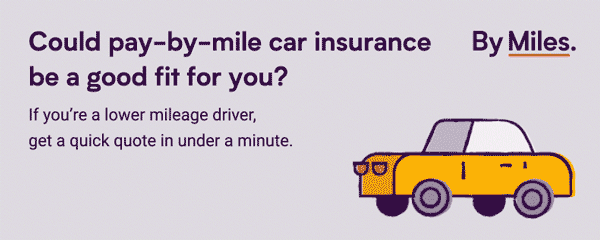It sounds like an oxymoron, but for some people there’s no option but to drive – so how can a car owner reduce their carbon footprint?
It’s no secret by now that driving is a major cause of carbon emissions. As climate change has become front page news, you might be asking what you can do in your everyday life to mitigate your impact – especially if you own a car.

You might not have the option to get rid of your car completely. Perhaps you live in a really rural area, or your job requires that you drive. With that in mind, these are the steps you could take – from small, everyday adjustments to major decisions – that could lessen your carbon footprint.
1) Pack light
Did you know that the less you pack in your car, the better for the environment? It’s only a small difference, but when your car is heavy, it puts a greater strain on your engine, and burns more fuel.
So before you head off on your next trip, think carefully about whether you really need that extra pair of boots. Lightening your load could save you money, and help save the environment at the same time.
2) Share a ride with a fellow car owner
Could you and a colleague take turns to drive to work? Or could you create a car pool for the school run?
Car sharing means fewer cars on the road, which means a smaller carbon footprint. Not only does it make eco-sense, sharing could also save you some cash on fuel (and on car insurance, if you’ve got a pay-by-mile policy).
3) Slow your roll
Driving faster uses more fuel. According to the Department for Transport, speeding at 80mph uses 10% more fuel than driving at 70mph. So sticking within the speed limit is positive in more ways than one.
4) Keep your car tyres properly inflated
Keeping your car well-maintained in general is one of the best ways to ensure you’re running it in an efficient way and being a responsible car owner. In particular, making sure that the tyres are well-inflated is a biggie: they can improve your gas mileage by 3%.
You could even invest in green tyres. These are a variety of tyre made with different kinds of eco-friendly rubber, designed to minimise resistance (and therefore put a bit less pressure on your engine).
5) Roll down the windows, and turn off the air con
Blasting your air conditioning actually burns through more fuel. Next time you’re driving on a hot day, try rolling down the windows a little before you’re due to travel, to release some heat from the car. Added bonus: you look extra cool when the wind is blowing through your hair as you drive.
6) Don’t get stuck in traffic
It’s not always possible to avoid a traffic jam, but aiming to travel outside of rush hours can make for a quicker, smoother journey. If you’ve got the flexibility to plan ahead, you can save yourself a lot of hassle by driving at quieter times of day.
You can also check live traffic reports from the AA and RAC to find out if there’s anything holding up the route you were planning, and give yourself the chance to look at alternatives before you leave.
But, if you do get stuck in a jam anyway…
7) Switch off your engine
Every time you’re at a standstill for a couple of minutes, it’s better for the environment to switch off the engine. There’s no need to burn fuel when you’re not moving. Plus, it’ll be good for your ears to enjoy the peace and quiet amidst the traffic jam stress for a minute or two. Ah, the joys of being a car owner.
8) Buy second-hand
Each new car that’s produced generates several tonnes of CO2 – we’re talking six tonnes for a Citroen C1, or 35 tonnes for a Land Rover Discovery.
With this kind of environmental cost, it makes sense to get the most use out of each car, running it for as long as possible, instead of continually producing new models. If you really need a new car, try looking at the second-hand market.
9) Even better – buy electric
This option isn’t for everyone. Electric cars are still relatively expensive, and many worry about access to charging points.
But, with prices dropping, charging points increasing, and second-hand electric cars entering the market, it’s becoming an ever more attractive option.
Electric cars aren’t perfect – it still takes a lot of carbon to produce each one. But unlike traditional cars, they don’t emit any greenhouse gases when running. Every car that is replaced with an electric car represents a CO2 saving of 133.1g/km. That’s whole lot less carbon in our atmosphere, and our lungs.
10) Most of all: drive less!
There’s only one option that is a surefire way to reduce your emissions: cut down on driving. The best way to reduce your carbon footprint is to try walking and cycling wherever possible.
If you’re a By Miles member, you could also save money by driving less. Our pay-by-mile car insurance policies only charge you for the miles you drive – so if your car stays at home, you pay less for your car insurance. It’s better for the environment, and better for your wallet, too.
Interested in being a greener car owner but haven’t switched to a pay-by-mile car insurance policy yet? Get a quick quote in under a minute here.




